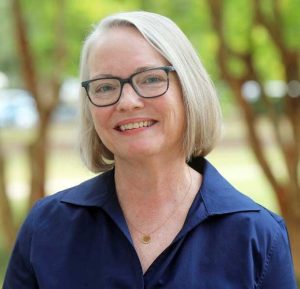March 2023: Melissa Hudson
East Carolina University Associate Professor in Special Education Foundations and Research
Identifying Best Practices for Learners with Extensive Support Needs During School Closures
“We’re first and foremost supporting teachers. We’re focusing on the foundation of good instruction, assessment, progress monitoring, and lesson planning.”
Melissa Hudson

How has the COVID-19 pandemic impacted the education of extensive support needs (ESN) students?
ESN students were impacted in the most adverse way. They require extensive support, and those weren’t able to be delivered during COVID. Many teachers were caught unaware and unprepared to deliver instruction in the home, and that put parents in the awkward position of having to be the deliverer of instruction when they weren’t prepared either. Additionally, with extensive support needs students, school is sometimes all the social interaction they get, and when they were forced to isolate there were lots of negative scenarios going on for kids with severe disabilities.
What unique challenges do ESN students face as a result of online learning that students without disabilities do not?
Online learning requires a great deal from the learner. You have to maintain your attention, you have to monitor your understanding, it all falls back on you. Students with extensive support needs often don’t have those skills. Many learners had disabilities that prevented them from learning via online instruction in the flat way that it’s delivered.
How is your research attempting to resolve COVID-19 related learning loss for special education students?
We’re first and foremost supporting teachers. We’re using a multipronged approach. First we are delivering training to teachers, then we will begin to meet with teachers and work with them on independent visual goals, and we are also going to have teachers join PLC (professional learning community) groups which will be a rich environment for information sharing. We’re focusing on the foundation of good instruction, assessment, progress monitoring, and lesson planning.
How can we get ESN students back on the right path after pandemic setbacks?
We believe it starts at the classroom level with the classroom teachers. If we can change teachers and improve instruction, then it’s going to translate into success through the next pandemic, or the next time they’re removed from in-person learning, as well as into every-day learning.
